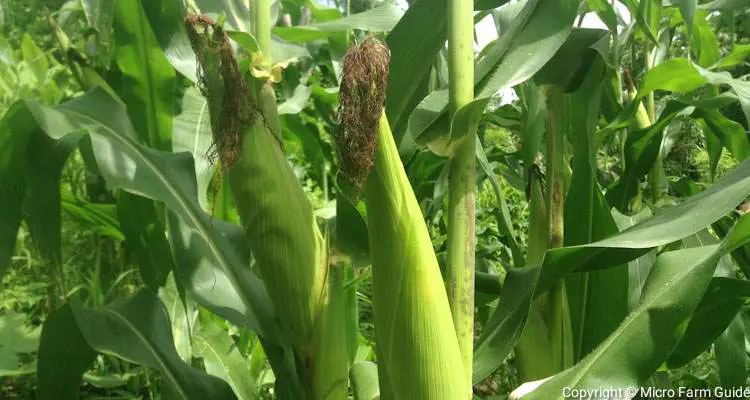Do you want to learn how to grow corn at home, even if you don’t have much space in your garden? The “trick” is to grow them in blocks instead of rows.
Corn is a versatile crop that is easy to grow but requires some planning to help ensure a bountiful harvest.
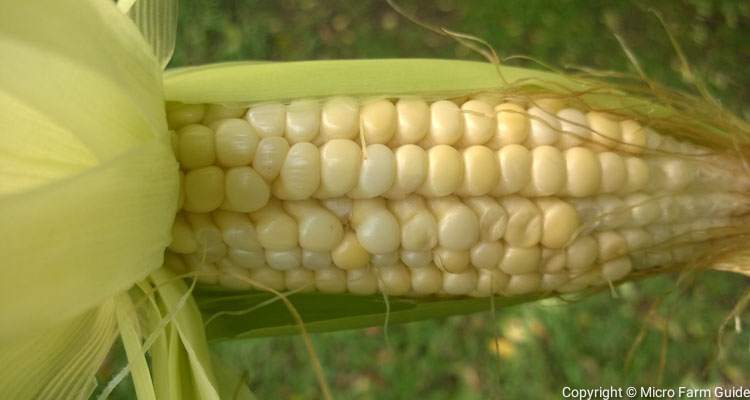
In this article, we will discuss the best way to grow corn at home and the simple process we use to help get perfect ears more often than not.
How To Grow Corn In Blocks
Growing corn in blocks is a great way to save space while encouraging the development of uniform ears and greater yields.
This is due mainly to the fact that corn relies on the wind for pollination. And the larger the cluster, the greater the chance of this being done properly.
If you look at a corn field closely, you’ll notice that commercial farmers have been growing corn in one massive block by placing rows side-by-side over 10s, 100s, and even 1000s of acres.
To achieve similar results in our backyard gardens, we can plant corn in individual mounds of 3 to 5 plants per hole, or use grid-like blocks measuring a minimum of 4 feet by 4 feet.
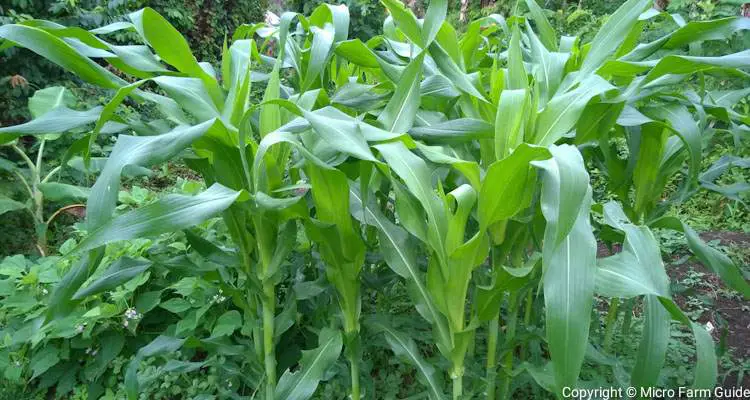
At Micro Farm Guide, we use a combination of these techniques based on the terrain and size of the available space. Yet, I prefer to use the grid formation, and scale it up when necessary, since it gives a high yield even where space is limited.
Now that we are on the same page; let’s look at the simple process we use to grow corn in our backyard farms.
How To Plant Corn By Hand (Step By Step)
Corn is easy to plant by hand, provided you can access viable seeds or healthy seedlings. Follow the steps below to get started.
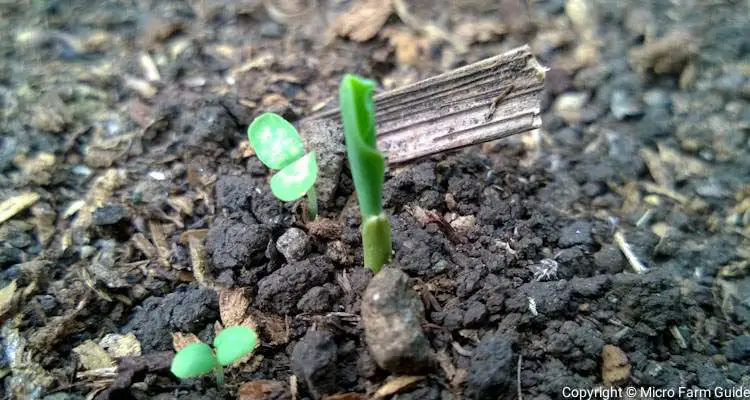
Step 1. Locate And Prepare The Soil
Find a well-lit area in your garden where the soil drains quickly, and mark off a section at least 4 feet by 4 feet.
Cut any vegetation within the area and use it, plus other organic material, to cover the planting area.
Water the ground thoroughly. Then cover it with a tarp or thick sheets of cardboard and allow the soil to rest for a week or two.
Step 2. Select The Best Variety For Your Area
Choose a variety of corn that grows well in your area. This can be sweet corn or another type of open-pollinated variety.
Not all varieties will suit your area at specific points in the year. So you will have to see what works best for you.
For example, I really like sweet corn, but they are prone to worm attacks and rain damage where I live. As a result, I usually plant more resilient, local varieties that have been saved and passed down over the years.
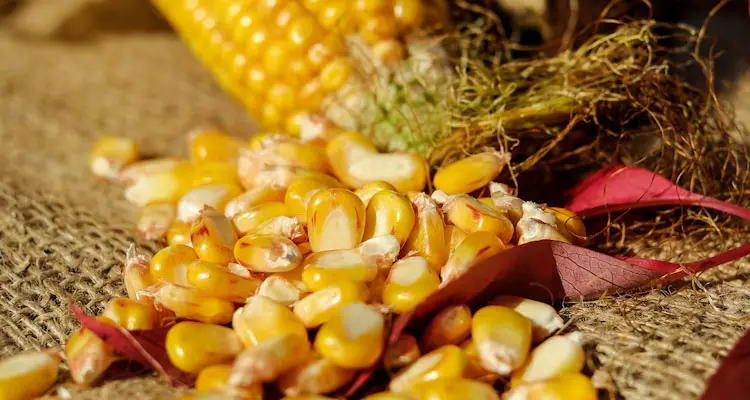
Step 3. Sow Seeds Or Transplant Seedlings
Uncover the planting area and make shallow holes about 1 inch deep.
Space holes about 12 inches apart in rows and columns within the block to form a grid-like pattern.
Place about 2 to 3 corn seeds per hole and cover them with soil, then water thoroughly.
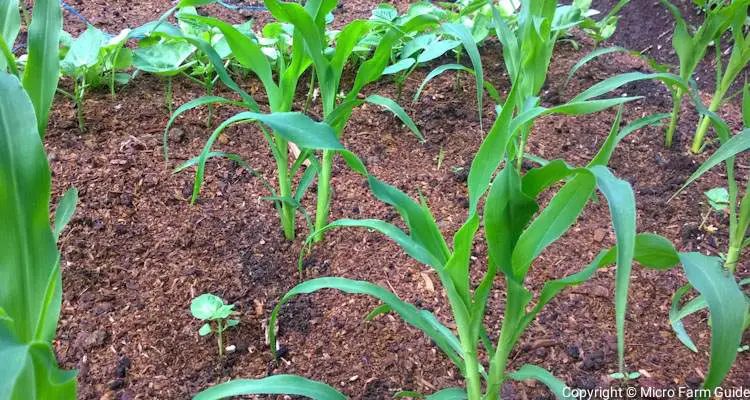
Seeds should sprout in about 5 to 7 days, depending on the temperature.
Monitor their growth and remove weaker plants, leaving one vigorous plant per hole.
Alternatively, you can transplant corn seedlings instead of planting seeds. This is necessary if you use thick mulches or need a head start on the planting season.
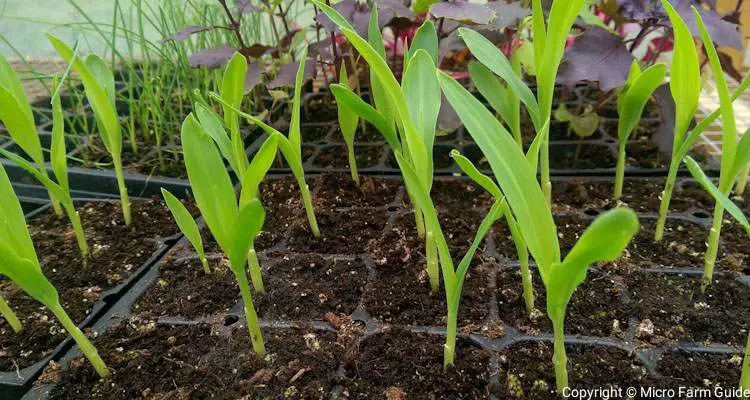
Step 4. Water And Apply Fertilizer
Corn plants require a lot of water and nutrients to grow. This is particularly important during drought and after they start to tassel. Hence the reason I suggested covering the soil with extra organic material while preparing the ground.
You should water corn plants thoroughly at least once per week instead of daily. Ensure that the water penetrates deep into the soil.
Apply a layer of mulch around the outer edge of the grid. The leaves of the corn will cover and protect the soil inside the block as they grow.
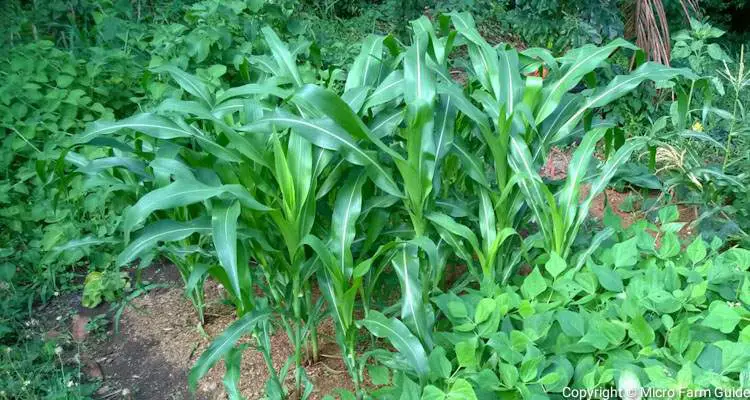
It would be best if you fertilized corn three times during its growth cycle; 1) while preparing the soil, 2) after the plant reaches 4 weeks old, and 3) when they are about 8 weeks old.
You can use a balanced organic fertilizer. This will give the plant the necessary nutrients without you having to get too technical about ratios and formulations.
How Long Does Corn Take To Grow?
Corn takes between 90 and 120 days to grow from seed to harvest. You can reduce this by using seedlings, which you can start indoors using suitable growing trays.
You’ll need to keep this range in mind when planning, since corn is a warm-season crop. That said, cor grows best when temperatures are between 70 to 86°F but can be planted once the soil temperature reaches 60°F.
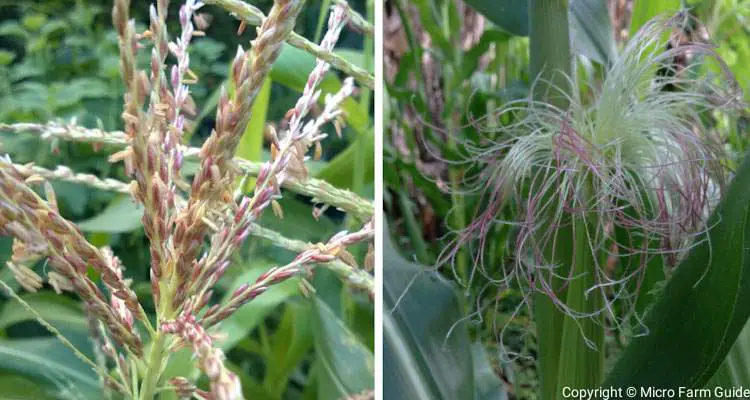
Corn should be planted in mid to late spring in temperate regions. However, they can grow throughout the year in tropical areas.
Ears of corn can remain on the stalk for up to 6 weeks after the silk appears, at which point they would be relatively dry. However, for peak sweetness, you can pick corn as soon as 20 days afterward.
Common Problems Faced Growing Corn (Q And A)
Corn is easy to grow, but occasionally you will encounter some problems, most of which are related to the length of the growing season and the time they spend in the ground.
Here are some common issues you may encounter and simple ways to solve or avoid them in the future.
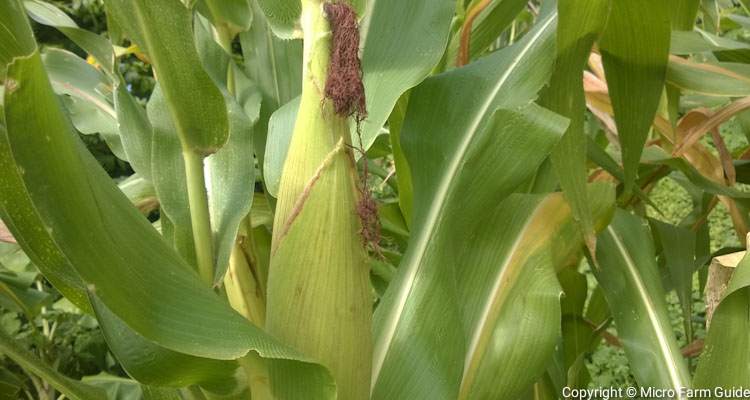
1. Why Is My Corn Tasseling Early?
Corn usually produces tassels early when they are stressed due to extremes in temperature, lack of water, insufficient nutrients, or a combination.
2. Why Is My Homegrown Corn Starchy?
Age is the main reason why homegrown corn tastes starchy. Corn converts sugars to starches for long-term storage as it matures. As a result, they tend to get tougher over time.
3. When Should I Harvest Corn?
Typically, corn is ready to harvest when their silk turns dark brown and its seeds feel firm to the touch. However, the exact time will depend on what you intend to do with it.
4. Why Is My Sweet Corn Not sweet?
Sweet corn loses its flavor as it converts the sugars into starch. As a result, they will most likely not be sweet if left on the stalk for too long,
5. Why Is My Sweet Corn Dying?
Sweet corn can die due to insufficient light, extreme temperatures, inconsistent watering, lack of nutrients, or pests and diseases. Ensure the plants’ needs are met, then monitor for pests if no change.
Related Questions
1. Is Corn Easy To Grow?
Corn is easy to grow if you have enough space, nutrients, light, and water. It requires a minimum space of 4 feet by 4 feet but will produce better in larger blocks.
2. Can You Grow Corn In Your Backyard?
Yes, you can grow corn in your backyard, provided you have enough space and suitable growing conditions. You can supply it with the nutrients it needs to develop correctly.
References
Utah Vegetable Guide. Sweet Corn. extension.usu.edu/vegetableguide/sweet-corn. Accessed February 2023

